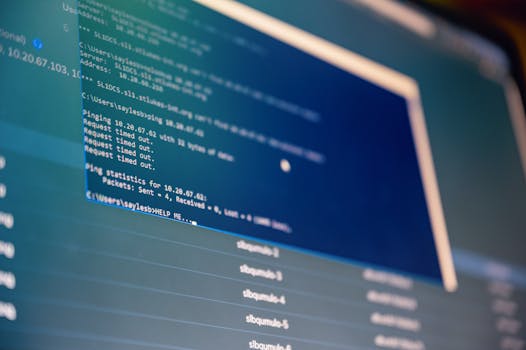Career
Elevate Your Career: Top Apps for Effective Goal Management
Master your professional journey with top apps designed for goal setting and management. Explore features that enhance productivity and success.
Advertisement
Setting and achieving professional goals is essential in today’s competitive job market. Many individuals struggle to keep track of their ambitions and the steps needed to reach them. Fortunately, apps designed to organize and manage professional goals can significantly simplify this process.
Utilizing technology effectively can streamline your goal-setting journey. Various apps are available, each with unique features tailored to help you chart your path. Whether you’re a novice professional or a seasoned expert, there’s an app suited to your needs.
In this article, we’ll examine some of the most effective app suggestions to help you organize your professional goals. By exploring their features and benefits, you can discover the right tools to elevate your career ambitions.
1. Trello: Organizing Goals Visually
Trello offers a visual approach to project management that can effectively help you set and track professional goals. Its board-and-card system allows you to categorize tasks by priority and deadline.
This flexibility is especially beneficial for visual learners. You can move cards around as tasks progress, providing a clear perspective on milestones achieved. This dynamic structure keeps you engaged and motivated.
Team collaboration is another strength of Trello. You can invite coworkers to share boards, ensuring that everyone involved is on the same page regarding shared goals. This fosters accountability and teamwork.
Integrations with other applications enhance Trello’s functionality. You can connect it with communication tools like Slack or project management systems, creating a comprehensive workspace that tracks all aspects of your goals.
To get started with Trello, simply create a free account and explore its features. You’ll find that the user-friendly interface makes managing your professional objectives both enjoyable and efficient.
2. Asana: Seamless Goal Management
Asana is a robust project management tool that facilitates goal tracking through structured task management. It allows users to break down their professional objectives into manageable tasks and assign deadlines.
One standout feature of Asana is its ability to visualize projects through timelines or calendars. This aids in understanding the timeline of your goals and helps keep you on track for timely completion.
Collaboration is seamless within Asana. You can create shared projects with colleagues and assign tasks to different team members. This reduces confusion and ensures everyone is accountable for their responsibilities.
Asana also offers reporting tools that allow you to track progress over time. These analytics can help you identify bottlenecks in your workflows, providing insights to refine your goal-setting process.
By integrating Asana with other tools you might already use, you can create a centralized hub for all your professional goals. It’s a smart move for enhancing productivity.
3. Notion: A Multifaceted Workspace
Notion provides a flexible workspace that allows for extensive customization. This versatility makes it an ideal app for organizing professional goals and managing various related tasks seamlessly.
Within Notion, users can create databases, notes, and kanban boards tailored to personal preferences. This adaptability encourages creativity in how you set and track your goals.
The app also supports collaboration, making it easy for teams to collectively contribute to goal development. Sharing documents or progress sheets fosters a sense of unity and collective success.
Notion’s integration with other popular tools allows you to include data from multiple sources. This ensures that all information is located in one organized space, simplifying your goal management efforts.
To make the most of Notion, experiment with templates and designs. This will help you discover the most productive way to visualize your professional aspirations.
4. Todoist: Task Management Simplified
Todoist focuses on simplifying task management while granting users the ability to meet their professional goals efficiently. The app’s simplicity allows for quick task entry and easy categorization.
With priority levels available, you can distinguish which tasks are urgent and which are less pressing. This organization helps in time allocation and keeps you focused on high-impact activities.
Todoist also offers repeat task options, enabling you to set recurring goals that support long-term career growth. This is ideal for tasks such as networking or regular skill practice.
Integrating Todoist with other apps and platforms is straightforward, enhancing its usability. Linking email or calendar applications can further streamline your workflow by consolidating notifications in one place.
For a more powerful experience, consider upgrading to Todoist Premium. This offers advanced features such as project tracking and filters, amplifying your goal-setting efficacy.
5. Microsoft To Do: A Straightforward Approach
Microsoft To Do provides a simple yet effective way to manage your professional goals. The app’s clean design ensures easy navigation and efficient organization of tasks.
With features like due dates and reminders, you will never lose sight of your deadlines. This functionality is crucial for maintaining motivation and a sense of urgency.
You can create distinct lists for various goals, separating professional tasks from personal responsibilities. This feature aids in maintaining clarity and focus on your career objectives.
Another advantage of Microsoft To Do is its integration with Microsoft Office applications. This can enhance productivity by allowing seamless transitions between tasks, schedules, and emails.
Whether you’re on a mobile device or using a desktop version, Microsoft To Do keeps your tasks synchronized, ensuring you stay updated on your goals wherever you are.
6. Evernote: Taking Notes and Tracking Progress
Evernote is renowned for its note-taking capabilities, making it an invaluable tool for organizing professional goals. The app allows for various forms of content, including images, documents, and text notes.
Using Evernote, you can create notebooks dedicated to specific goals. This keeps related notes and resources neatly consolidated, making reviewing your progress easier.
Tags are a handy feature in Evernote for categorizing your notes, which improves searchability. This function ensures that all of your relevant information is easily accessible when you need it.
Collaboration features enable sharing notes with colleagues, making it easy to gather feedback and insights on your goals. This interaction can provide motivation and encourage collective problem-solving.
For a richer experience, consider using Evernote Premium, which unlocks additional features like offline access and increased storage space. This can significantly enhance how you track and manage your professional goals.
7. Google Keep: Quick and Easy Notes
Google Keep is a straightforward note-taking app that helps you quickly jot down ideas related to your professional goals. Its simplicity caters to users who prefer minimal distractions.
You can create color-coded notes to visually organize your goals, making it easy to categorize different priorities. This feature aids in quick identification of what needs immediate attention.
Reminders integrated within Google Keep ensure you are notified about critical dates, fostering a consistent approach to meeting your goals. This helps keep you accountable for your tasks.
Collaboration is also seamless with Google Keep. You can easily share notes with colleagues to gather insights and ideas, enhancing collective goal achievement.
Accessing Google Keep on any device ensures that your notes follow you wherever you go. This ensures you can stay updated and organized, regardless of your location.
Conclusion
Organizing professional goals effectively can make a significant difference in your career progress. By utilizing the right apps, you can streamline the process and enhance your productivity.
Whether you prefer a visual approach with Trello or a minimalistic experience with Google Keep, there are tools suited to every style. Choosing the right app is crucial in achieving your professional aspirations.
Ultimately, the key is to stay committed and regularly review your goals. With determination and the right resources, your professional growth can continue to reach new heights.
Explore different apps, find what inspires you, and watch your professional journey unfold successfully. The right tools are waiting to assist you on your path to success.
| App Name | Key Features | Best For |
|---|---|---|
| Trello | Visual boards, team collaboration | Visual learners |
| Asana | Task management, reporting tools | Structured project management |
| Notion | Custom databases, documentation | Flexible goal organization |
| Todoist | Task prioritization, repeat tasks | Simple task management |
| Microsoft To Do | Due dates, reminders | Basic organizational needs |
| Evernote | Multi-format notes, tagging | Comprehensive note-taking |
| Google Keep | Color-coded notes, quick reminders | Minimalistic users |
- Trello for visual organization.
- Asana for task tracking and collaboration.
- Notion for customization and flexibility.
- Todoist for straightforward task management.
- Google Keep for quick notes and reminders.





